Wuhan Hot Dry Noodles
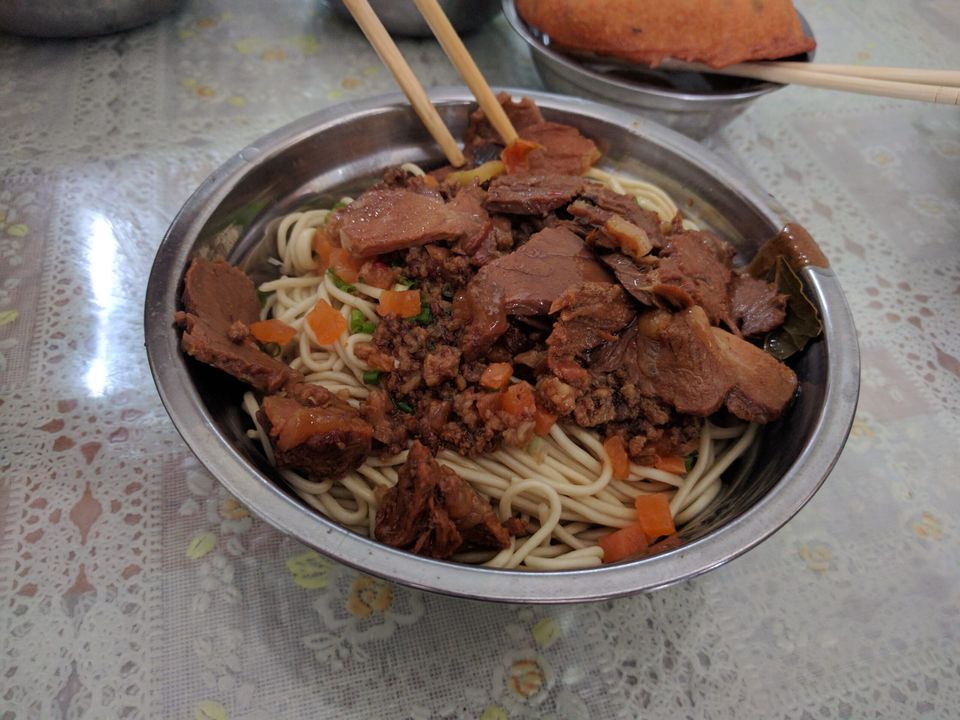
Just give me the recipe instead:
Wuhan Hot Dry Noodles
Intro | Breakfast
Breakfast in Wuhan is a chaotic affair. Breakfast street foods are cheap, and almost everyone takes public transport of some kind to get to work. So between 6am and 9am on any given weekday, there is a crush of people around every bus and subway station, lining up in front of street carts, corner shops, and alleyways for their own personal favorite version of their preferred breakfast.
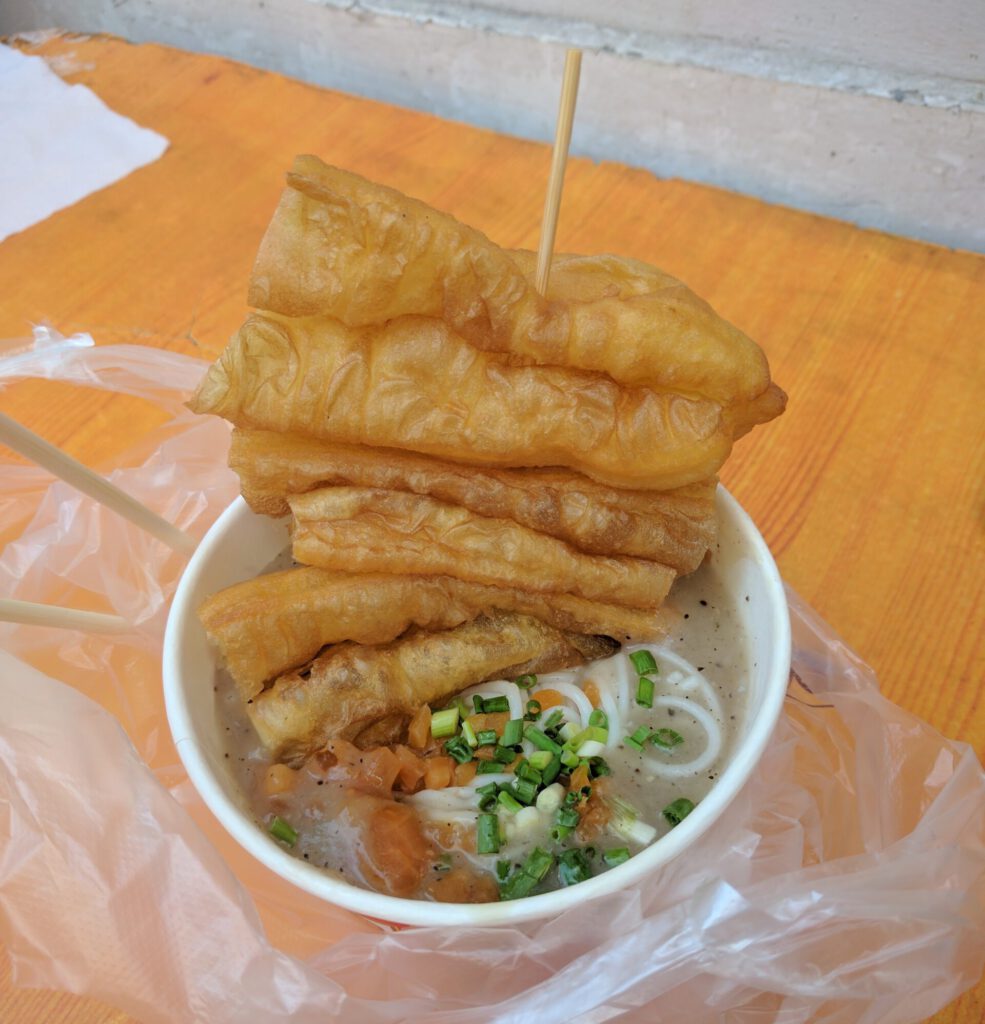
As with much budget Asian breakfast street food with humble origins, meat and dairy don’t figure largely in the typical Wuhan breakfast; instead, they lean heavily on the tried and true method of unsubtly generous portions of cheap vegetable protein, carbs, and fats of various kinds to get you through your morning.
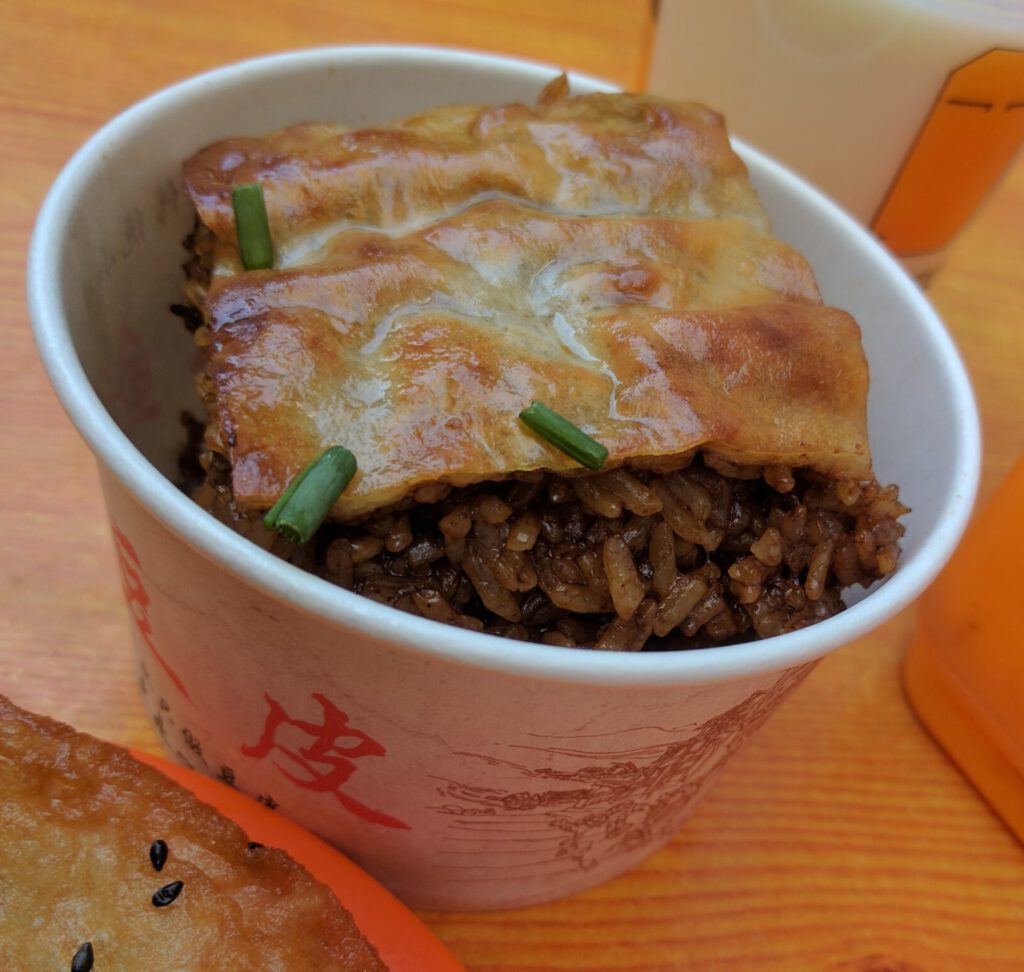
Among the most popular of Wuhan’s breakfast foods are:
- Dou pi (豆皮), or “bean skin,” glutinous rice seasoned with mushrooms, black pepper, scallions or shallots fried in oil, sandwiched by two paper-thin sheets of pressed tofu skin, and pan-fried until crispy on each side. An order will get you a paper bowl the size of your face, crammed to the brim.
- Dou hua (豆花), or “bean flower,” is a popular choice for the more health-conscious crowd. It is incredibly tender silken tofu, served either with a scoop of sugar, or (less commonly outside of Sichuan) with a savory, spicy meat or bean-based sauce and chili oil. The best versions I’ve had are invariably served by an elderly lady, from a weathered wooden bucket sat by the side of a busy street.
- You bing (油饼), or you tiao (油条), are essentially savory donuts. They’re both made with the same batter/dough, the difference between the two largely residing in form factor and size. You bing are often irresponsibly large and shaped either like a half or full moon, whereas you tiao are about the length of your forearm, and have a double helical shape, like a deep fried strand of DNA — or perhaps more relatably, like the twisted crullers at Dunkin or Krispy Kreme.
- Shao mai (烧卖), typically called “shumai” in the west as they were popularized by Hong Kong dim sum restaurants, are a little different in Wuhan; the filling is typically glutinous rice, flavored with a little mushroom and a lot of black pepper, dripping with pork fat and wrapped in a thin wheat flour wrapper, then steamed until tender.
- Mian wo (面窝), literally “noodle nest,” these are deep-fried savory donuts made with a slightly fermented rice and soybean batter, flavored with ginger and scallions. They’re somewhat similar in flavor to medu vada from the south of India, but more similar in texture to dosa from the north of India. With a crisp, golden surface and edges that shatter to reveal a tender, chewy interior, these are a traditional complement to the star of the Wuhan breakfast scene: Hot Dry Noodles.
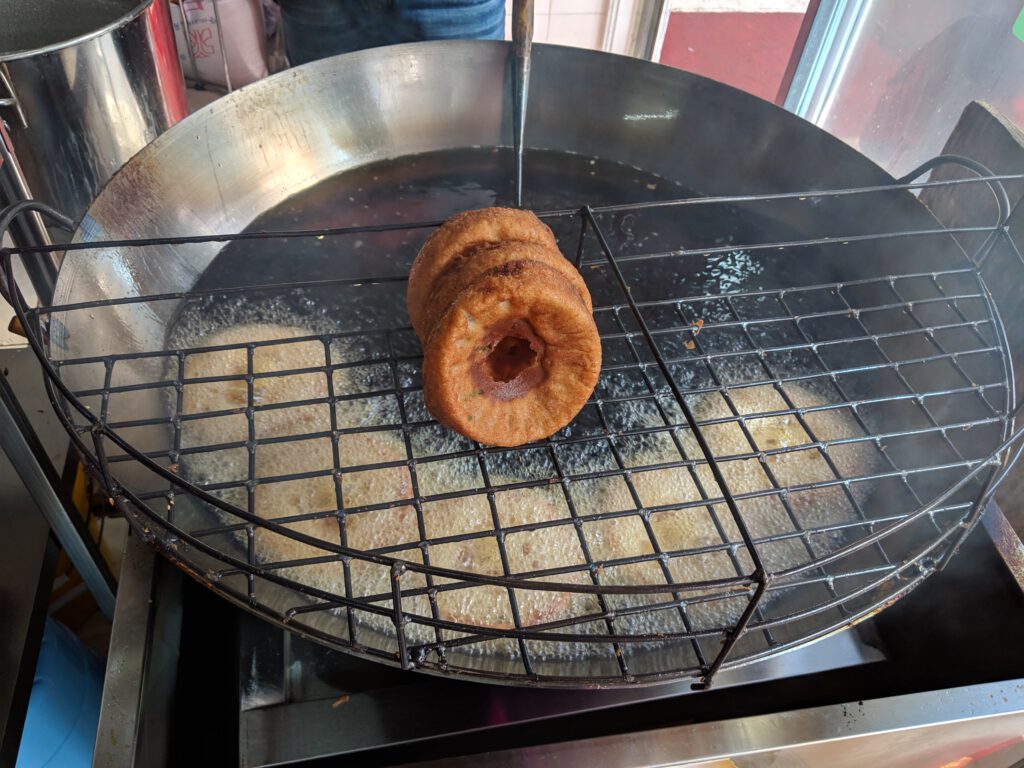
Probably the most popular, and certainly the most famous, of Wuhan’s foods is “Hot Dry Noodles,” or re gan mian (热干面). It’s been featured in various Chinese publications as one of the top tier noodle dishes of China, and is the only thing that every tourist (Chinese or foreign) to Wuhan I’ve met has wanted to try.
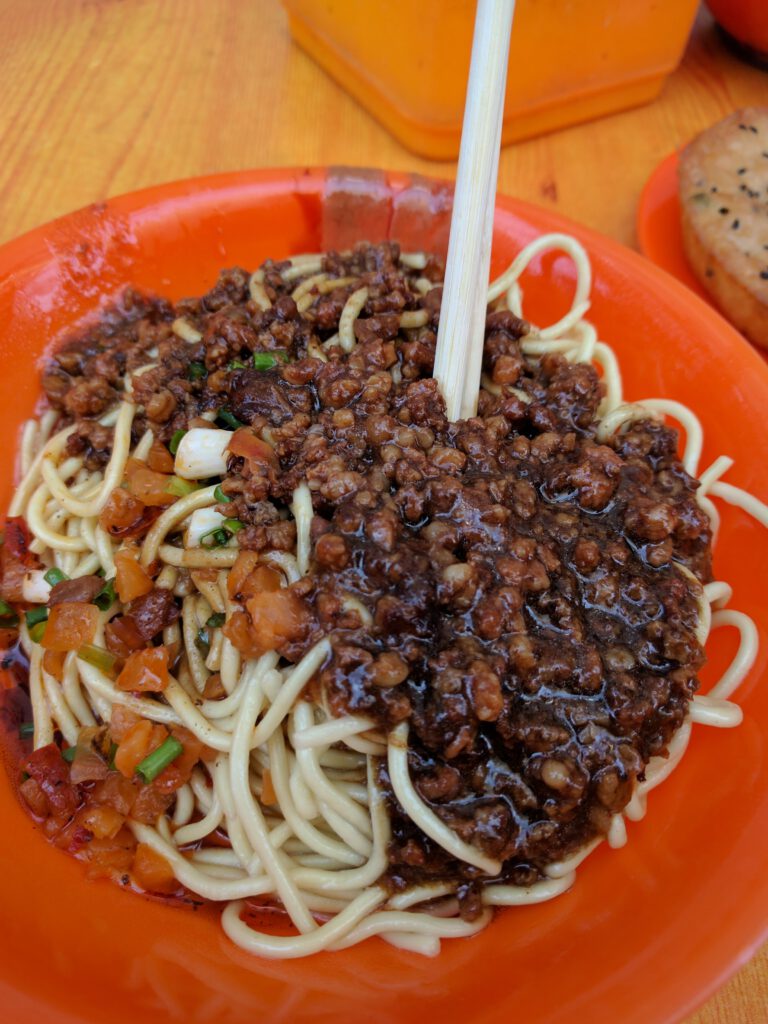
As with most dishes of this type, there’s an endless variety of preparations and styles, which makes this something more of a style, rather than a specific dish. There are only four common denominators I’ve found among all the many dozens of different bowls I’ve tried:
- Alkaline noodles (similar to Japanese ramen noodles), usually made with potassium (and/or sodium) carbonate
- Chinese sesame paste
- Soy sauce, light and dark
- Black vinegar and chili oil, added as an option or freely available as condiments on the counter or tables
Aside from these constants, I’ve seen variations on anything and everything including — but not limited to — the type of oil used, noodle style (thin or thick, hand-pulled or cut), sauces (with ground beef, ground pork, chunks of either, fermented soybeans, fermented broad beans, or anything else), pickled vegetables of just about any type, fresh minced garlic (seared with oil or soaked in water), scallions, cilantro, a ladle or two full of spiced broth, fried peanuts, fried soybeans, and in one memorable instance quite a large housefly, although I can’t be sure that last one was intentional; animal protein usually costs extra.
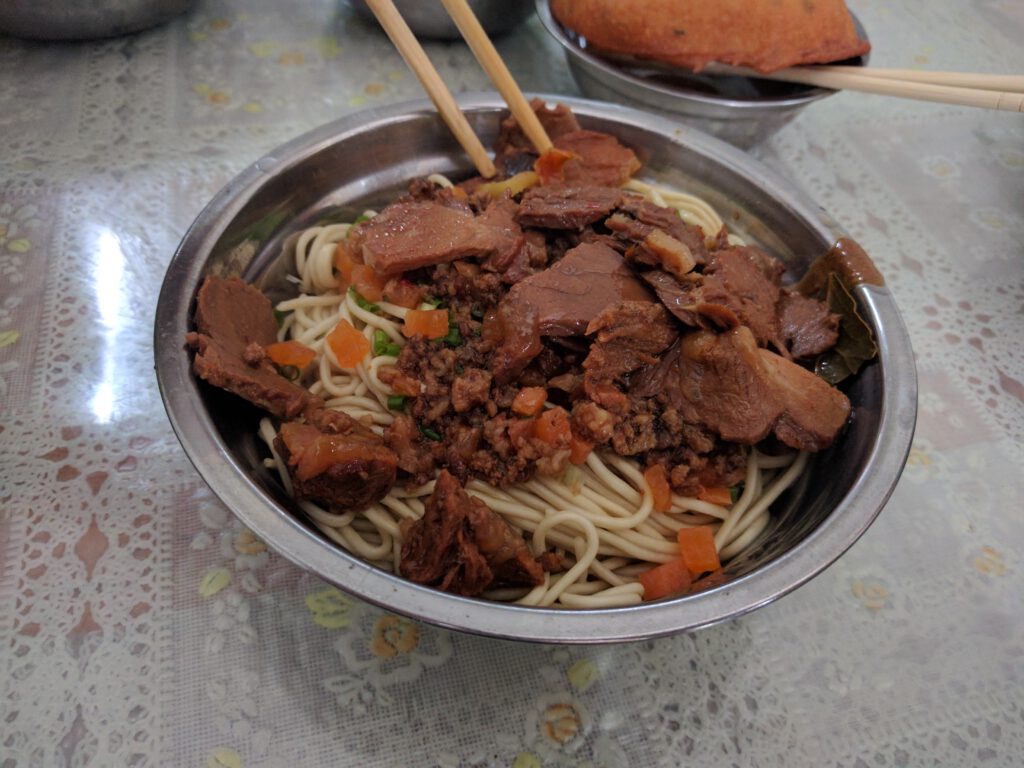
History | Don’t You Dare Waste A Single One Of These Goddamn Noodles
The origin story behind these is… well, actually kind of boring. A street vendor back in the 1930s knocked over some sesame oil into his noodles, and rather than throw them out, he decided to cook them anyway and serve them hot, without soup, and topped with whatever else he had.
They proved popular, he made up the incredibly unimaginative name on the spot, and since then the dish in its various forms has been a breakfast staple of the city and gaining popularity all over China.
The most endearing part of this story to me is that it is so typical of my experience growing up in an Asian household. If something in the fridge was going bad, or otherwise just kind of… off, the unspoken agreement was that either:
- You found some way of making it at least halfway palatable, and ate it quickly rather than throwing it out, or
- It stayed in the back of the fridge until it became absolutely, undeniably inedible or poisonous, at which point everyone would deny any knowledge of this thing’s existence in the first place, and it could be tossed without remorse, finger pointing, or loss of dignity.
Food waste is not something we take lightly, and it’s comforting to find a fairly well documented example of someone finding culinary and (I hope) commercial success from this mentality.
Discovery | The Most Important Meal Of The Day
Ever since I started spending time in Wuhan, Hot Dry Noodles has been a regular feature of indulgent weekend breakfasts or brunches, and the subsequent hours trying to fight through the carb coma. I do remember my favorite re gan mian joint in the city, which was run by a husband and wife team from a folding table in an alleyway between two somewhat more established street stalls, which were in turn flanked by formal restaurants and supermarkets.
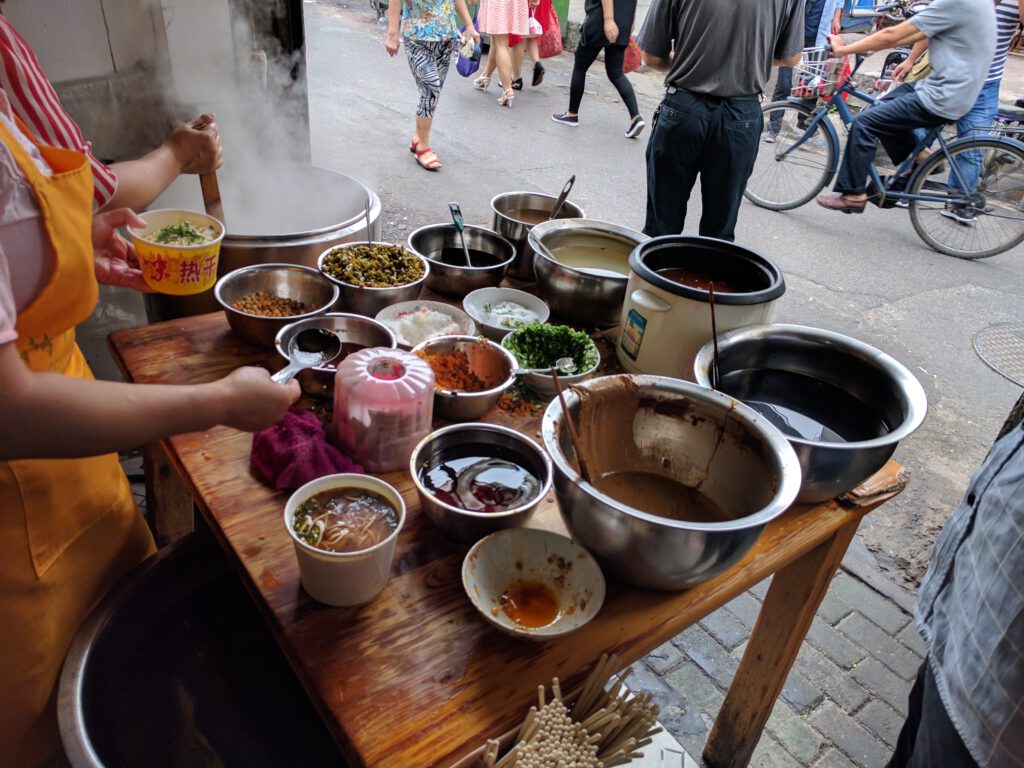
They represented perhaps the epitome of the kind of restaurants that I love the most; they made one thing, they made it in manageable batches, with precision and great skill, and when they sold out (as they did every day) they closed up shop and went home to make more.
Granted, this is not often a template for sustainable growth in a business, and I know for a fact that this specific place has been closed for years. But there is something romantic about an eatery that is only one or two steps removed from someone’s home kitchen, and I maintain that some of the greatest meals to be had on this earth are best when eaten out of a paper cup or a plastic bag, while standing in the gutter of a busy street.
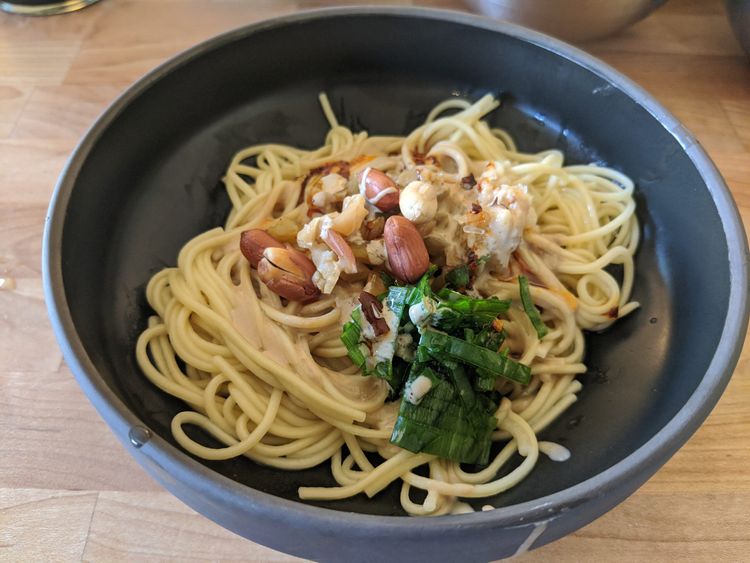
Comments ()